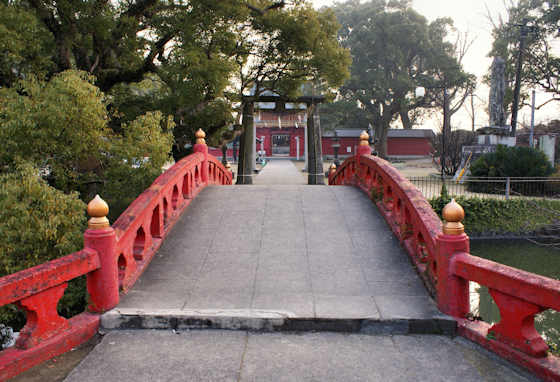Ushiki is a small farming village on the bank of the Koishiwara River that runs from the mountains to the NE down to the Chikugo River. On the opposite bank is the town of Amagi where I had just visited
Kotokuin Temple.
Most people would walk right past such a small, local shrine, but I was always on the lookout for interesting and unique artwork like carvings or statues, but also because such shrines have connections to local and national history.
There was nothing unusual in the art of this shrine, but its history throws some light onto a little known aspect of fairly recent "religious" history. This is now a Tenmangu, enshrining Sugawara Michizane, a national shrine with many bramches, especially in this area. However, local records list it as a Ta shrine, with a couple of obscure kami.
The shrine has a large ancient tree with a couple of small shrines at its base. Interestingly the shintai, the object within the shrine that is inhabited by the kami when it descends, is arge stone. Most sources nowadays stress that shintai are mostly mirrors, though that is very much a modern creation of modern state shinto. Many shintai used to be Buddhist statues, and many small, local shrines, like here, used a stone. The mirror was linked with Amaterasu, the Imperial ancestor who is nowadays said to be central to shinto.
I suspect that this was the original shrine. In the early 20th century the government initiated a program of shrine closures which resulted in half of the shrines in Japan being closed. These were all local, often nature-based shrines with sacred trees. The trees were cut down and sold as lumber and locals were forced to worship at a national shrine.
One way some communities resisted this program was by very quickly enshrining a national kami in the shrine and therefore spared the destruction of the sacred tree. There are examples of this in my own area.














































